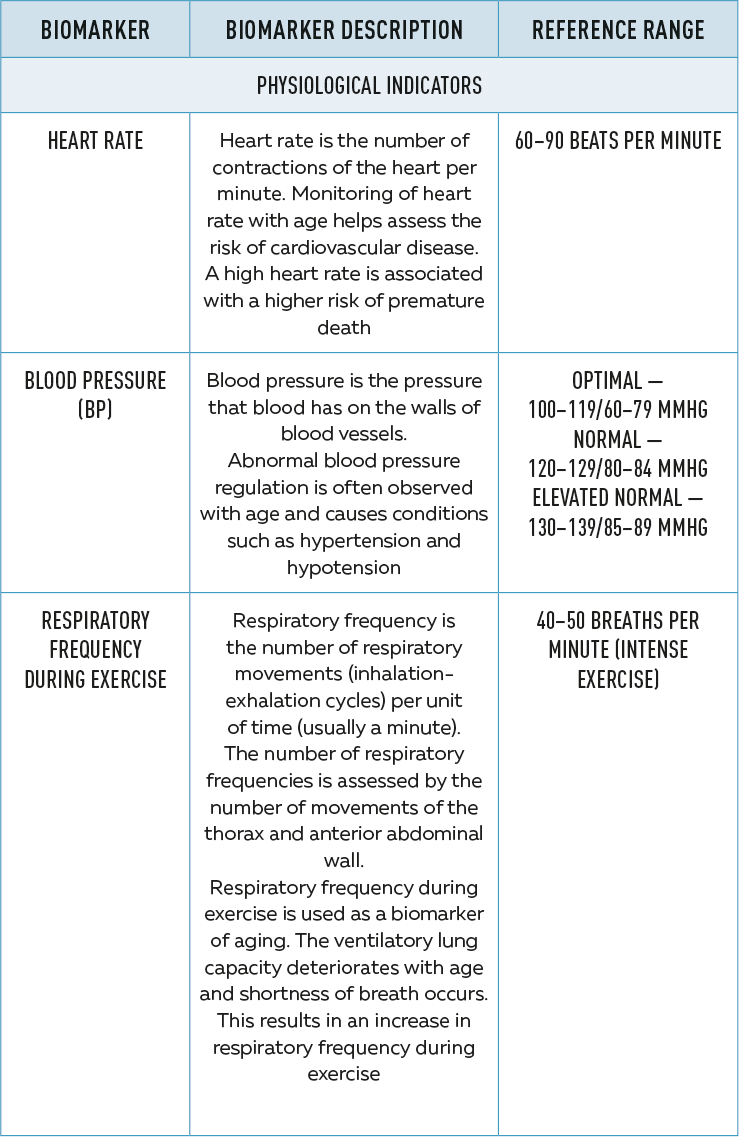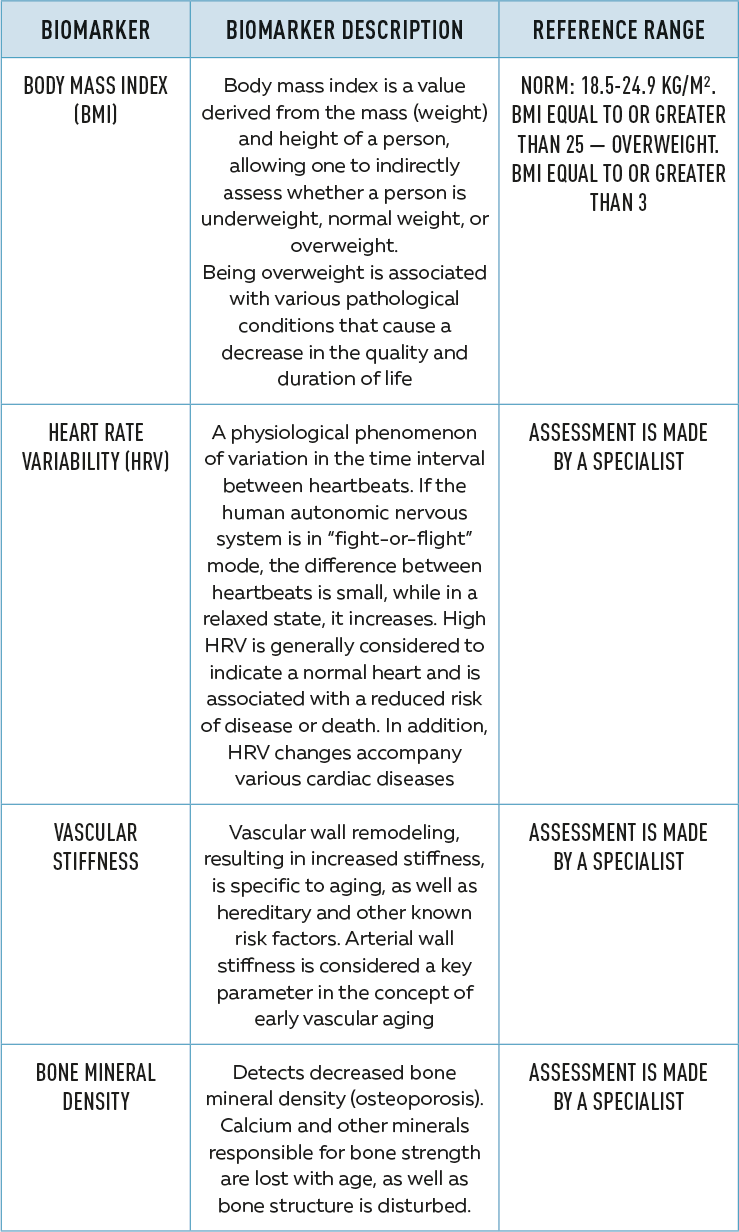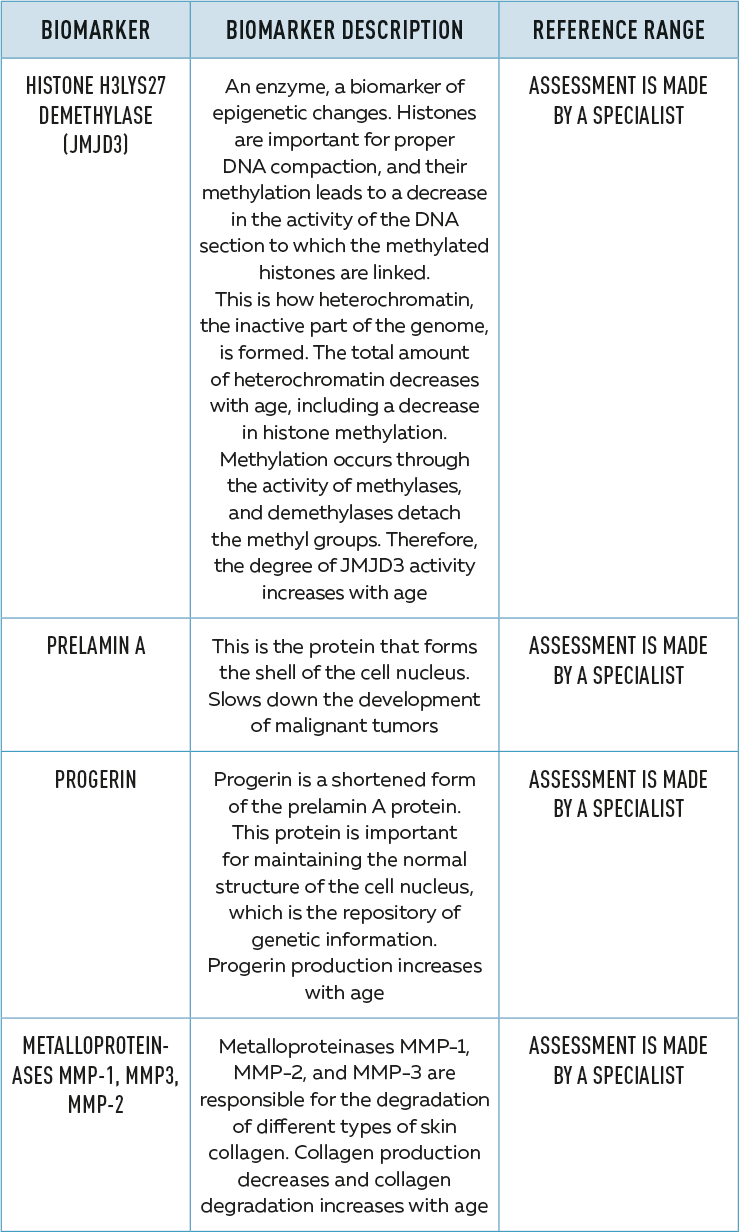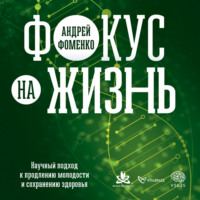
Полная версия
The Power Of Youth. How To Tune Our Mind And Body For A Long And Healthy Life
3. CALORIE RESTRICTION. The idea that a caloric deficit can prolong life comes from theories connecting longevity and metabolic rate. The authors and defenders of these theories believe that living beings are given a limited number of resources, including energy, which can be expended during life. Restricting caloric intake, leading to a slowing down of metabolic processes, helps to save "life force": figuratively speaking, a fire will burn longer if we toss small portions of fuel into it. There is evidence for the accuracy of such a view.
4. SLEEP CULTURE. According to the National Sleep Foundation, adults need 7 to 9 hours of sleep per night[22]. Young children need more hours to grow and develop (the younger the child, the more). People over the age of 65 need 7 to 8 hours of sleep.
Getting enough hours of sleep and monitoring its quality are two important aspects for those who want to achieve longevity and maintain their health. Sleep gives energy for mental and physical activity, contributes to the recovery processes, and strengthens almost all systems of the body.
Experts recommend always following a sleep regime, even on weekends, performing relaxing treatments before going to bed (for example, meditating, reading, taking a hot bath), avoiding caffeine or alcohol several hours before bedtime, choosing a comfortable quality mattress and pillow, maintain an optimal temperature and pleasant aroma in the bedroom, turn off lights and electronic devices (TV, computer, smartphone, etc.) an hour before bedtime.
Find out if you suffer from apnea (pauses in breathing during sleep), one of the most common causes of poor sleep. It increases the risk of high blood pressure and heart disease.
5. HEALTHY MIND. A healthy lifestyle is not just about exercising or dieting. It is also a concern for mental well-being and the development of cognitive skills. Such components of a healthy lifestyle as a positive attitude to life, stress management, and intellectual discipline (reading, language learning, and logic games), play a key role in maintaining mental health and increasing life expectancy.
One of the most effective methods to "free the mind" is meditation. It helps to shift attention from worrying about the future or fixing the past to the present moment and thus helps to interrupt the endless flow of negative thoughts and anxiety. You do not need to play appropriate music or light incense (this is optional) to start meditating, just find a quiet place and take a comfortable position. You can learn the meditation process yourself. For example, with the help of dedicated apps.
6. FEELING YOUNGER. Although health deterioration in the aging process is universal, people perceive and experience it in different ways. Scientists from Seoul National University, together with colleagues from Yonsei University (South Korea), concluded that feeling younger than you are is a major component of good health in mature years[23]. But the subjective feeling of being older, as MRI has shown, on the contrary, reflects a more rapid brain aging. This has also been confirmed by French and American scientists[24]. The study involved 17,000 retirement-age people who were followed for 20 years. It turned out that subjects who felt 8-13 years older had an increased risk of early death (by 18–25 %).
7. GREATER SOCIAL TIES. It is almost impossible to keep track of long life without diseases alone, without the motivating force of family, friends, and loved ones. You can only do it with people supporting you. A person has a great opportunity to generate more resources, energy, and experience together with other people, which will necessarily affect not only the general quality of life but also the internal physiological and mental condition.
8. GOAL SETTING. People who know why they live have the best chance to live longer. Many studies confirm this hypothesis. Having a purpose in life is characteristic of the inhabitants of the so-called "longevity regions" – places where people on average live longer than the population of the Earth. Dan Buettner, an American writer, and traveler, calls such places "blue zones." In a series of books on features of life in these amazing areas, Buettner points out that almost all blue zone inhabitants have special mindfulness practices allowing them to find meaning in life.
The inhabitants of the Japanese island of Okinawa have a practice called ikigai. This is translated as "something or someone that gives a person a sense of purpose or a reason for living." It is a person's main interest, the main aspiration in life. It answers the questions like "What am I doing here?" – "Why am I living?" – "How can I be useful to the world?" etc. Ikigai is a comprehensive notion running through life and helping to find yourself, your path, meaning, and purpose.
The inhabitants of another blue zone, the Nicoya Peninsula in Costa Rica, believe that a plan de vida is essential for a long, happy life. This term means a constant search for a reason to wake up in the morning, to enjoy every single day.
CONCLUSION
It is everyone's dream to live in a young body as long as possible. There is no universal recipe, practice, or panacea that can solve the problem of aging and premature death once and for all. The way to this dream is through the formation of many habits: sufficient physical activity, adequate nutrition, healthy sleep, as well as mindfulness practices allowing to boost optimism and define life goals.
And it does not matter which view of aging dominates now – the "program" written in the genes, or the random accumulation of "breakdowns." Indeed, these theories allow us to understand some patterns and build a safety net in dangerous moments. At the same time, research shows that the main levers for managing life and youth prolongation are in our hands. That is why each of us can now take responsibility for our own lives and begin to create our own "blue zone."
BIOMARKERS OF AGING















CHAPTER 2
GENETICS
GENETICS IS EVOLVING MORE RAPIDLY: EACH YEAR OF DNA RESEARCH BRINGS MORE DISCOVERIES THAN THE PREVIOUS ONE. THIS SCIENCE HAS SPREAD TO MEDICINE, PSYCHOLOGY, ANTHROPOLOGY, ECOLOGY, AND OTHER FIELDS. IT HAS BECOME THE BASE FOR UNDERSTANDING THE HUMAN NATURE. GENETICS STUDIES THE BASIC MECHANISMS OF HEREDITY AND VARIABILITY, PROPERTIES THAT ARE COMMON TO ALL ORGANISMS. IT HOLDS GREAT PROMISE FOR PROLONGING A HEALTHY AND ACTIVE LIFE.
DEVELOPMENT OF GENETICS
Even though genetics as a science was formed only in the XX century, our remote ancestors had some understanding of heredity. Even thousands of years ago, people knew that certain traits could be passed from one generation to the next. Considering this, they crossed and bred animals and plants, improving their properties and functions.
The first and simplest assumption of how certain traits are inherited was that the traits of both parents are "mixed" in the children, so the children are something between the mother and the father. However, already ancient Romans knew that this process had to take place differently.
In the mid-nineteenth century, the experiments of the Austrian friar Gregor Mendel made us closer to the modern understanding of the memory of generations. The examples from his observations of plants showed that traits are not mixed, but are transmitted in the form of discrete (isolated) units to the next generations. The scientific community did not attach great importance to his discovery.
Only in 1900 did botanists Hugo de Vries, Carl Erich Correns, and Erich Tschermak obtain similar to Mendel's results and, one after another, published studies that confirmed his hypothesis. In 1909, Danish biologist Wilhelm Johannsen called the discrete units responsible for the transmission of traits "genes", and in 1910 American geneticist Thomas Hunt Morgan established that genes are located in chromosomes. Scientists were able to explore the function of chromosomes only in the middle of the twentieth century when it turned out that hereditary information is contained in DNA.
Less than 70 years have passed since James Watson, Francis Crick, and Rosalind Franklin deciphered the structure of DNA. Since then, many discoveries have been made on the structure of the human body and using this information to prolong life. And for that, we must take a closer look at what DNA is.
OUR GENETIC CODE
Deoxyribonucleic acid (DNA), which is found inside the nucleus of every cell, holds the information that makes an organism what it is. To understand what it looks like, you can imagine a zipper twisted into a spiral. This long spiral chain, consisting of two strands, is constructed of four blocks called nucleotides: adenine – A, cytosine – C, guanine – G, and thymine – T. The entire DNA "text" consists of about six billion "letters" and contains "instructions" for the construction of every cell in our body. Each of the nucleotides has a pair from another strand, to which it is joined by hydrogen bonds. Adenine will always be paired with thymine and cytosine with guanine.

Regions of nucleotide sequences are called genes. The set of genes received at birth is the genotype, and all hereditary material contained in a cell is called a genome.
Proteins are the levers by which DNA controls the body. They are necessary for various biochemical reactions (as catalysts), metabolism, digestion, wound healing, etc. – for all the complex physiological interaction that ensures the health and life of the body. Proteins are formed during gene expression, the conversion of the hereditary information located in genes.
Expression occurs in several stages, but the key ones are transcription and translation. When the cell needs a certain protein – the transcription starts, i.e., the sequence of nucleotides in the right part of the DNA is copied into the ribonucleic acid (RNA). These RNA copies of DNA fragments act as matrices for protein synthesis – the translation starts.
The information flow in cells is directed from DNA to RNA, from RNA to protein – this is the central dogma of molecular biology.
The global Human Genome Project, completed in 2003, found that there are about 22,000 genes encoding proteins in human cells. Quite interesting, because before it was supposed to be at least 100 thousand. But it turned out that humans do not need so many genes, because each of them can perform several functions at once and synthesize several protein variants.
Except for the coding DNA, there is also non-coding DNA in the cell – the one that does not synthesize proteins. It makes up about 98 % of all human DNA. It is often called "junk DNA," because it is not yet fully understood exactly what functional activity non-coding DNA has. However, despite its name, it is also important for the life of the organism, and part of it plays a role in epigenetic (remember this word) regulation.
It can be said that genes are essentially eternal. Each of the DNA molecules can control its reproduction: copy itself and continue to exist for millions of years. But genes can change – various conditions affect them – and human health depends on these changes (mutations) because they are the root cause of many diseases.
GENETICS AND MEDICINE
Human genes are like little computer programs, embedded in humans since ancient times. For example, tens of thousands of years ago the insulin receptor gene in adipose tissue made sense for our ancestors: it helped to store as many calories as possible at a time when food was always in short supply. Today, however, humans have no need to forget hunger, so the gene does more harm than good: problems such as overweight and obesity develop at double speed. The modern computer age requires humans to update their genetic code, and scientists already can modify it.
Many see the possibility of defeating many serious diseases, including cancer, in genetics. Today, there are promising gene therapies against cancer – they allow us to edit DNA information. This enables specialists to "remove" harmful genes and activate useful ones.
FUN FACT
THE WORLD'S FIRST HUMAN-APE HYBRID
In 2019, an international team of scientists from China, the United States, and Spain, led by Spanish biologist Juan Carlos Izpisua, created the world's first chimera ape embryo with human cells. The experiment was conducted in China because there are allowed experiments with gene modification, but due to ethical qualms, the embryo was given only 14 days to live.
Chimeras are animals or plants whose cells contain genetically distinct material. According to scientists, the creation of such organisms will help solve the transplantation issue, because human organs can be grown in them.
In 2014, scientists at the Massachusetts Institute of Technology discovered one of the mechanisms of genome editing, CRISPR/Cas9. This technology allows cutting double-stranded DNA anywhere, while other methods have their limitations and are more difficult to perform. With this method, it has become possible to perform faster and more precise modification of DNA in the genome, as well as to introduce more than one gene into a modifiable organism at a time. This method is cheaper and simpler than previous developments. Not surprisingly, CRISPR/Cas9 has been used more in recent years and is finding new applications.
Specialists are developing customized programs to significantly improve overall health: techniques such as genome analysis, gene therapy, and molecular diagnostics using biomarkers are already yielding positive results in animal experiments. And in 2021, the first human study of Alzheimer's disease gene therapy was launched: researchers from the University of California, San Diego injected patients with a harmless virus that can activate a gene associated with slowing and preventing the process of neurodegeneration.
FUN FACT
THE SECRET OF YOUTH LIES IN "JUMPING GENES"
The question of what biological mechanisms underlie eternal youth has been troubling scientists for decades. The answer, experts believe, may lie in the DNA of the long-lived insects – termites.
On average, termites live from two months to two years when it comes to workers and soldiers, but their queens live ten times longer (from 25 to 50 years). If termites lived as long as humans, monarchs would reach the age of 1,000 years.
A team of scientists led by Professor Judith Korb of the University of Freiburg found that aging in termites of Macrotermes bellicosus species is associated with the activity of mobile genetic elements, or "jumping genes" – self-copied DNA elements that can move independently and thereby disrupt the normal functioning of other genes nearby, leading ultimately to aging and death. In monarchs, jumping genes are inactive, so these insects are well protected from aging. However, scientists must find out how they managed to suppress this mechanism.
Many diseases are based on genetic disorders or genetic predisposition. By identifying the genes that cause a particular disease, we can start treatment or prevention in time. Recently, the polymerase chain reaction (PCR) method has been widely used, which allows to multiply of a DNA segment into billions of copies in a few hours. For PCR tests, we can use just one cell or a small sample of tissue. This is very important, for example, for early diagnosis of diseases: we can take one embryo cell obtained by fertilization in vitro, perform genetic screening and, if necessary, carry out the treatment of the unborn child. Over time, this can have a positive impact on the health of future generations by reducing the spread of disease.
Scientists are actively studying anti-aging methods and identifying the genes that control this process. For example, they compare the genome of old and young people and use a computer to identify where the most genetic damage occurs.
In addition, it is known that aging is caused by telomere shortening during cell division. Telomeres are located at the ends of chromosomes and they protect DNA. At the end of the XX century, it was discovered that the activation of telomerase, which is responsible for telomere lengthening, makes a single cell immortal. The anti-aging potential of telomerase has been discussed for many years.
Scientists have developed special injections of the telomerase gene, TERT. The specific approach of using TERT therapy was confirmed by molecular biologist Maria Blasco in mice, where she prolonged both the average survival and the maximum age of the animals[25]. In one group, mice received TERT injections at 420 days of age, which increased median survival by 24 % and maximum life expectancy by 13 %. In another group, rodents received injections at 720 days of age, which helped increase median survival by 20 % and maximum life expectancy by 13 %.
The results suggest that gene therapy may not only conquer all genetic disorders but also help humanity to defeat aging and death in the future.
A WORD ON SEQUENCING
DNA and RNA discovery gave science a powerful impetus to find reliable ways to sequence nucleotides. They are all united by a generic term – sequencing.
Sequencing technologies bring us closer to the future of genomic medicine. The deciphering of the genetic code has opened unprecedented prospects for scientists and physicians and has made it possible to solve many applied and fundamental problems: the development of new medicines, vaccines, and other products. Sequencing technologies not only help identify deep-seated diseases, but also allow us to learn more about the evolutionary history of humans, animals, and plants, as well as understand the causes of mass extinctions on Earth. By sequencing the genomes of the remains, scientists learn about the origin of species, the body age, and habitat conditions. By studying DNA fragments, scientists identified a new species of ancient people, the Denisovans[26].
Initially, sequencing was a very expensive method and only very rich people and organizations could afford it. Today, almost every scientific or medical laboratory can order or perform this procedure independently. Many companies are performing genetic testing and offering individualized recommendations to help improve health and prolong life. If you know that one of the genes is defective, you can mitigate its harm in different ways, such as lifestyle adjustments or drug therapy. This personalized approach is more advanced than the current level of medical development and is undoubtedly useful for the aging research field.
Thus, by reading the genome, it is possible to unlock the secrets of longevity encoded in it and change human life for the better by activating the "immortality genes" and protecting them from damage.
WHAT IS A METAGENOME?
Sequencing technology has opened new horizons not only for geneticists but also for microbiologists. Previously, scientists could only study the genome of microorganisms that could be grown on a nutrient medium. Due to sequencing, it is now possible to obtain information about microbes with only their DNA, RNA, or even fragments of genetic material. The development of this technology led to the appearance of a new branch of molecular genetics – metagenomics.
In this discipline, experts do not study the genes of specific cells within a body or in microbial cells, but rather the metagenome – the set of all the genes in any given sample.
Samples for subsequent metagenomic analysis can be obtained from different areas of the human body: oral, intestinal, and vagina metagenome. It can also be samples obtained from the environment. For example, in 2003, scientists used the sequencing method for metagenomic analysis of ocean water samples obtained from different parts of the planet[27]. As a result, only in a sample from the Sargasso Sea, experts found about two thousand DNA samples of different species, including 148 bacteria previously unknown to science.
The study of the metagenome helps not just to perform a genetic analysis of microbes, but to understand the laws of microbial communities, and to define their mutual influences and metabolic chains. It allows us to get a better understanding of life in the microcosm inside us and around us.
CONCLUSION
Currently, DNA analysis forms the basis of biological research and is used in biotechnology, virology, and medical diagnostics. New technologies are being developed and improved to detect various diseases, such as diabetes, cancer, and neurodegenerative and cardiovascular diseases, which greatly reduce the quality of life and contribute to the overall mortality statistics of the population. Early diagnosis and precise treatment were made possible by genetic methods and a better understanding of the body's structure at the molecular level. They will lead to prolonged life and help defeat aging.
CHAPTER 3
EPIGENETICS
EPIGENETICS IS A RELATIVELY NEW BRANCH OF GENETICS WHICH IS CALLED ONE OF THE MOST IMPORTANT DISCOVERIES SINCE THE DNA WAS DECODED, AS IT PROMISES TO TURN OUR LIVES AROUND AS WELL AS THE LIVES OF OUR DESCENDANTS. PREVIOUSLY, IT WAS THOUGHT THAT THE GENETIC CODE WITH WHICH WE ARE BORN DETERMINES OUR ENTIRE EXISTENCE. BUT NOW IT IS KNOWN THAT WE CAN CONTROL GENES: "TURN ON" OR "TURN OFF" THEM BY VARIOUS FACTORS, SUCH AS LIFESTYLE OR THE ENVIRONMENT. THIS MEANS THAT GENETICS DOES NOT PREDETERMINE OUR HEALTH STATUS OR LIFE EXPECTANCY – WE "PUSH THE BUTTONS" OF GENETIC CHANGES AND THEREBY CONTROL OUR FUTURE DESTINY.
"OVER" GENETICS
Epigenetics (the Greek prefix epi means "over," or "above") is the study of stable phenotypic changes that do not involve alterations in the DNA sequence. In simple terms, it studies how genes are "turned on" or "turned off" by environmental factors. You can imagine how a certain "commander" orders the genes to work or to rest ("stay silent") at a certain moment, depending on the signal received. This "commander," who determines the activity of genes, is an epigene. Ecological environment, diet, physical activity, bad and good habits, toxins, viruses, biochemical processes in the body, as well as thoughts, emotions, feelings, and human behavior are signals to it.
DNA is the code that an organism uses to build and rebuild itself. But the genes also need "instructions" to structure the course of work. And the collection of such "instructions" is our other code, the epigenetic program, which tells the body how our genes shall work.
HOW THE EPIGENETIC MECHANISM WORKS
The main ways to control gene activity are histone modification and methylation. Histones are special proteins to which the DNA in the cell nucleus is wound around, like a coil, to form a tight pack, the nucleosome. The tighter this pack, the less DNA is available to the enzymes that conduct transcription – synthesis of RNA from the DNA matrix. And since there is less RNA, less protein is produced. This means that the gene in this area will have little or no activity. However, signals from the external environment can contribute to a looser arrangement of these "coils," so that enzymes gain access to this DNA section. This means that RNA, and then proteins, can be synthesized – the gene is active.







